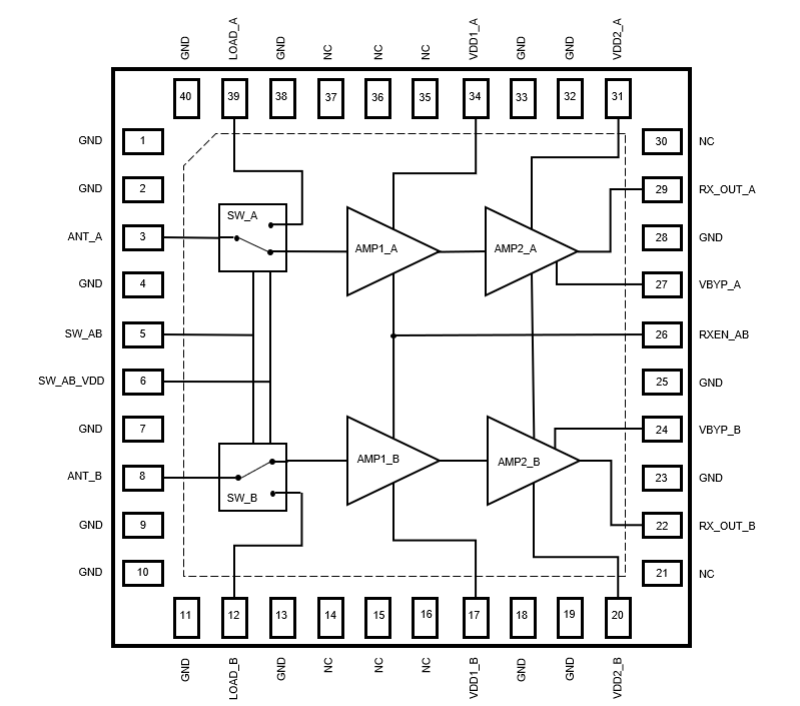Femto/picofarad antenna-tuning ICs enable smartphones to work over several bands and scenarios, thus solving the challenging impedance-matching dilemma. One of the indicators of innovative engineering is to take an attribute that is normally considered to be a drawback and not only negate that characteristic but actually use it to advantage in another setting. Consider this…
Dual LNA targets 5G base stations
The QPB9378 from Qorvo covers 5G’s mid band, seen as the sweet spot for range and bandwidth.
Wi-Fi 6 RF front ends combine functions
The low-power QFP4526 and high-power QFP4568 bring switches, filters, and amplifiers to Wi-Fi 8 (802.11ax) designs. Wi-Fi 6 (IEEE 802.11ax) access points, routers, gateways, customer-premise devices, and IoT devices need amplifiers to boost signal power to its final levels. The QFP4526 and QFP4568 front-end modules from Qorvo operate at 3.7 V and 5 V power…
Power transistors drive 5G cells
The single QPD0005 and dual QPD0405 power transistors from Qorvo provide the power needed to drive cellular antennas.
Amplifier targets cellular Band 66
The QPA9901 amplifier from Qorvo provides a typical gain of 36.5 dB covering 2110 MHz to 2200 MHz.
The difference between active and passive antenna systems
5G networks demand new antenna designs to deliver faster speeds for sub-6 GHz and millimeter wave (mmWave) communications. These new antenna technologies, however, often create a tech jargon that can potentially confuse readers. Let’s set the record straight in terms of who is who in the 5G antenna designs. It starts with the difference between…






